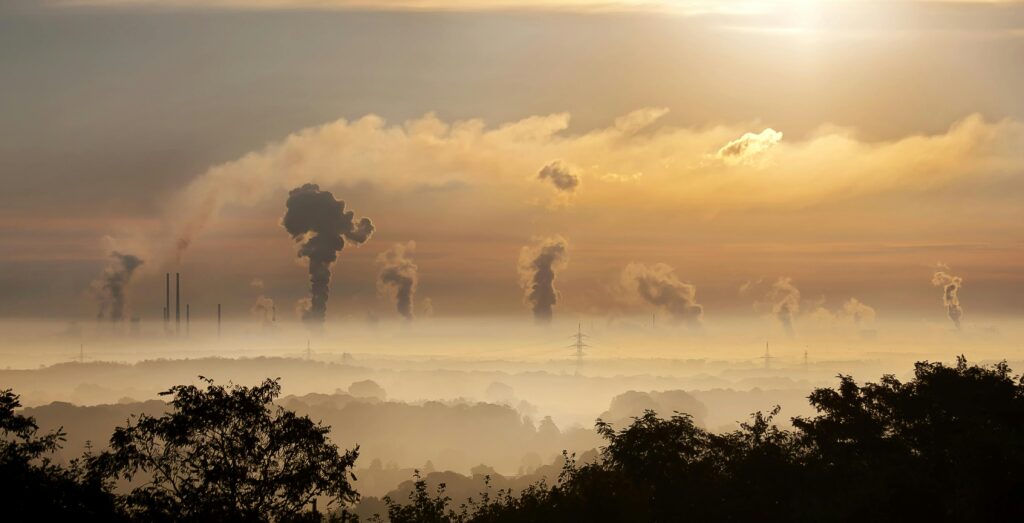The Future of Carbon Capture: Can We Reverse Climate Change?

A Race Against Time
Have you thought of a world where we can pull carbon dioxide straight from the air and store it safely away, slowing or even reversing global warming?
Sounds like science fiction, right? Well, carbon capture technology is rapidly evolving, and scientists believe it could be a game-changer in the fight against climate change. But is it too little, too late? And can these innovations actually make a difference on a global scale? Let’s dive into the latest advancements, their potential impact, and what needs to happen next.
What is Carbon Capture and How Does It Work?
Carbon capture and storage (CCS) is a process that removes CO2 emissions from sources like power plants and industrial sites before they reach the atmosphere.
The captured carbon is then stored underground or repurposed for other uses, such as creating synthetic fuels. Here’s a quick breakdown of how it works:

- Pre-Combustion Capture – CO2 is removed before fuel is burned.
- Post-Combustion Capture – CO2 is filtered out after burning fossil fuels.
- Direct Air Capture (DAC) – Machines extract CO2 straight from the air.
Each method has its challenges, but the technology is improving rapidly.
Latest Innovations in Carbon Capture
1. Direct Air Capture (DAC) Gets a Boost
Companies like Climeworks and Carbon Engineering are making strides with DAC, which sucks CO2 directly from the air. While early versions were expensive and energy-intensive, recent developments have significantly lowered costs. The Orca plant in Iceland, for example, captures thousands of tons of CO2 annually and stores it underground in basalt rock formations.
2. Biochar: Nature’s Carbon Sponge
Biochar is a charcoal-like substance made from organic waste. It locks carbon into the soil for centuries while improving soil health. This natural approach is gaining traction as an affordable, scalable carbon storage method.
3. Enhanced Weathering: Turning Rocks into Climate Solutions
Some scientists are looking at ways to speed up natural rock weathering, a process that absorbs CO2 over time. By spreading finely ground minerals like basalt over farmland, researchers believe we can accelerate carbon absorption while enhancing crop yields.
Can Carbon Capture Reverse Climate Change?

The short answer? Not on its own. While carbon capture can significantly reduce emissions, it’s not a silver bullet. Climate experts agree that carbon capture must be combined with aggressive emission reductions and renewable energy expansion to be truly effective.
Current Limitations:
- High costs and energy requirements – Carbon capture and storage (CCS) technologies are still expensive to implement and operate. Capturing CO2 from industrial emissions or the atmosphere requires advanced filtration and processing methods, which consume a lot of energy. For instance, Direct Air Capture (DAC) is particularly energy-intensive, as it must filter out CO2 from the air where it exists in very low concentrations. These costs make widespread adoption challenging, especially in countries or industries with limited budgets for climate technology.
- The need for large-scale deployment – For carbon capture to have a meaningful impact on climate change, it must be deployed on a massive scale. Right now, the total amount of CO2 captured is only a tiny fraction of global emissions. Scaling up requires significant infrastructure, investment, and government incentives. Additionally, the captured carbon must be transported and stored safely, which demands extensive pipeline networks or geological storage facilities.
- Uncertainty over long-term storage safety – Once CO2 is captured, it needs to be stored securely for centuries to prevent it from re-entering the atmosphere. Most carbon storage solutions involve injecting CO2 deep underground into rock formations. However, concerns remain about potential leaks, seismic activity, and the long-term stability of these storage sites. Scientists and engineers are still studying how to ensure that stored carbon remains permanently trapped without causing unintended environmental risks
However, with better funding, policy support, and innovation, carbon capture could play a major role in achieving net-zero emissions.
What Can We Do? Practical Solutions for a Sustainable Future
1. Support Policies that Fund Carbon Capture – Governments must incentivize CCS projects and research.
2. Invest in Carbon-Neutral Businesses – Support companies that prioritize sustainability, such as those investing in carbon capture, renewable energy, and low-emission manufacturing. Consider eco-friendly brands, green banks, or sustainable investment funds that actively reduce carbon footprints.
3. Reduce Personal Carbon Footprints – While CCS is crucial, cutting emissions through lifestyle changes is still essential, such as using energy-efficient appliances, reducing single-use plastics, and opting for sustainable choices.
A Step Forward, But Not the Only Solution
Carbon capture is a promising tool in the fight against climate change, but it’s not a standalone fix. To make a real impact, we need a mix of emission reductions, renewable energy expansion, and continued technological advancements. The future of our planet depends on bold action, so let’s make it count.
Get what I mean?
References
- Climeworks
- Carbon Engineering
- IPCC Report on Carbon Capture



